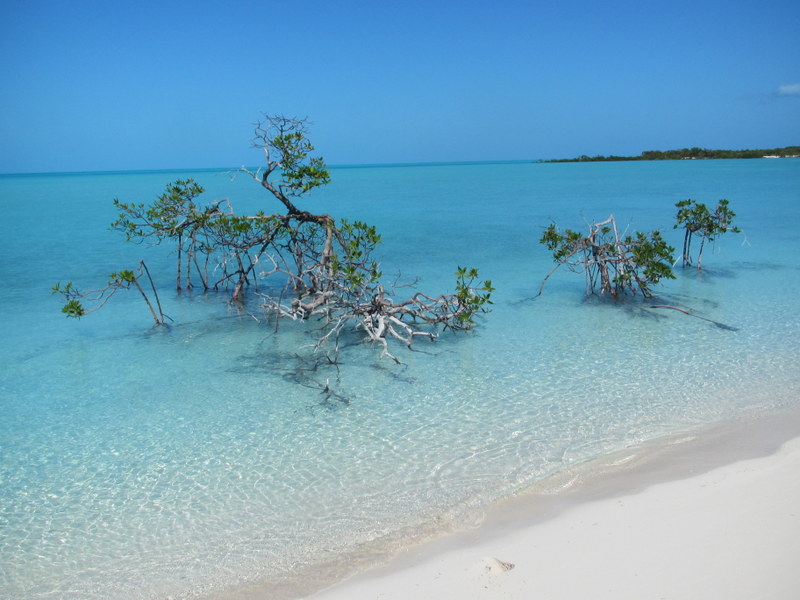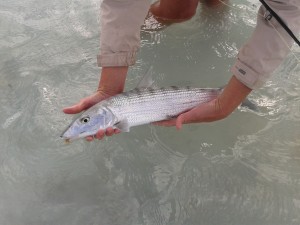The bonefish tagging project continues to study the movements, population size and structure, and the possible impacts of angling on these important fish. By capturing and tagging large numbers of bonefish at multiple sites throughout The Bahamas, we hope to better understand bonefish movements, as well as determine how many spawning aggregations exist and where they are located. This information can help identify coastal areas that should be protected.


A team of scientists visited Exuma early this spring with hopes to expand the bonefish tagging program to this island. The team, consisting of Aaron and Brian Shultz (The Cape Eleuthera Institute), Dave Philipp, Julie Claussen, and Chris Haak (Fisheries Conservation Foundation), met up with the staff at Hummingbird Cay and were later joined by the family that owns the small island located to the west of Great Exuma. Brian Shultz conducted a sustainability audit for Hummingbird Cay, while the rest of the team surveyed the creek systems and tidal flats. The scientists also connected with several bonefish guides on Great Exuma to discuss the importance of the bonefish tagging program and the recent tagging efforts on other islands such as Abaco, Grand Bahama, and Eleuthera. Stevie Ferguson, Reno Rolle, Drexel Rolle and several other bonefish guides agreed to help capture and tag 500+ bonefish later this year. Overall, this was a very successful trip that would not have been possible without the support of the Hummingbird Cay Foundation and Exuma Foundation.
Tagged fish continue to be recaptured, including this longest-distance swimmer, who was originally tagged in November 2010 by Capt. Buddy Pinder in the Marls of Abaco and recaptured on January 10, 2013, in north Eleuthera, 106 miles away across open ocean.